Francesco Morichetti
Training of Physical Neural Networks
Jun 05, 2024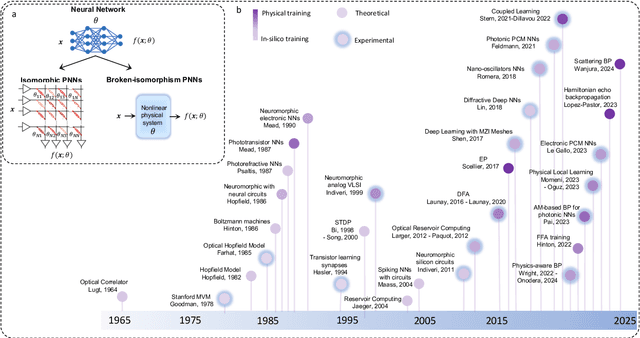
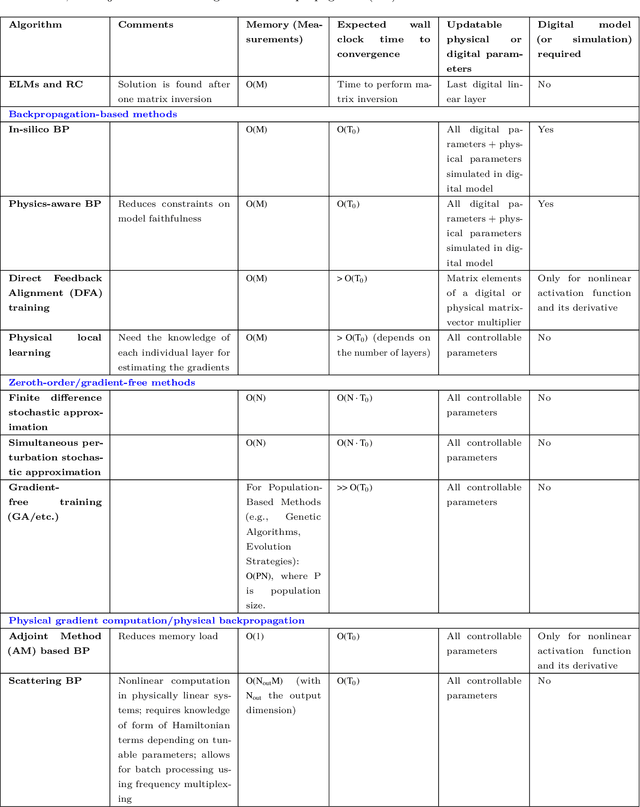
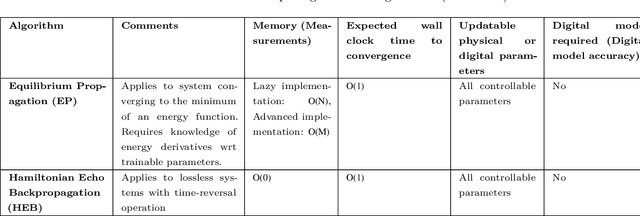
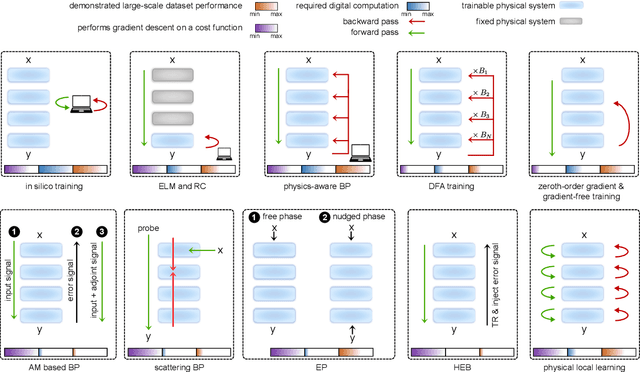
Abstract:Physical neural networks (PNNs) are a class of neural-like networks that leverage the properties of physical systems to perform computation. While PNNs are so far a niche research area with small-scale laboratory demonstrations, they are arguably one of the most underappreciated important opportunities in modern AI. Could we train AI models 1000x larger than current ones? Could we do this and also have them perform inference locally and privately on edge devices, such as smartphones or sensors? Research over the past few years has shown that the answer to all these questions is likely "yes, with enough research": PNNs could one day radically change what is possible and practical for AI systems. To do this will however require rethinking both how AI models work, and how they are trained - primarily by considering the problems through the constraints of the underlying hardware physics. To train PNNs at large scale, many methods including backpropagation-based and backpropagation-free approaches are now being explored. These methods have various trade-offs, and so far no method has been shown to scale to the same scale and performance as the backpropagation algorithm widely used in deep learning today. However, this is rapidly changing, and a diverse ecosystem of training techniques provides clues for how PNNs may one day be utilized to create both more efficient realizations of current-scale AI models, and to enable unprecedented-scale models.
Scalable Low-latency Optical Phase Sensor Array
May 03, 2023



Abstract:Optical phase measurement is critical for many applications and traditional approaches often suffer from mechanical instability, temporal latency, and computational complexity. In this paper, we describe compact phase sensor arrays based on integrated photonics, which enable accurate and scalable reference-free phase sensing in a few measurement steps. This is achieved by connecting multiple two-port phase sensors into a graph to measure relative phases between neighboring and distant spatial locations. We propose an efficient post-processing algorithm, as well as circuit design rules to reduce random and biased error accumulations. We demonstrate the effectiveness of our system in both simulations and experiments with photonic integrated circuits. The proposed system measures the optical phase directly without the need for external references or spatial light modulators, thus providing significant benefits for applications including microscope imaging and optical phased arrays.
Experimentally realized in situ backpropagation for deep learning in nanophotonic neural networks
May 17, 2022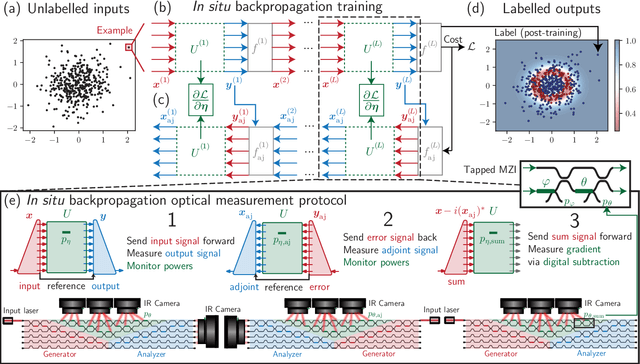
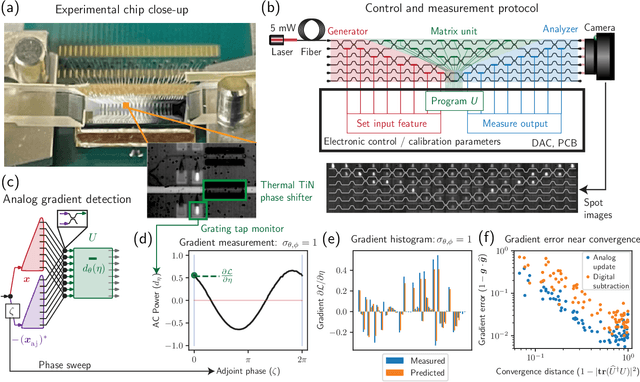
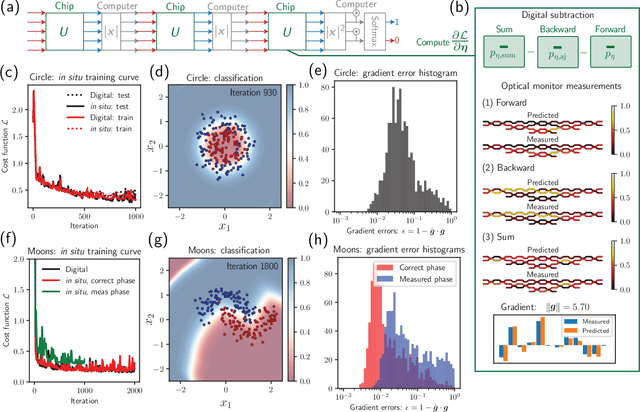
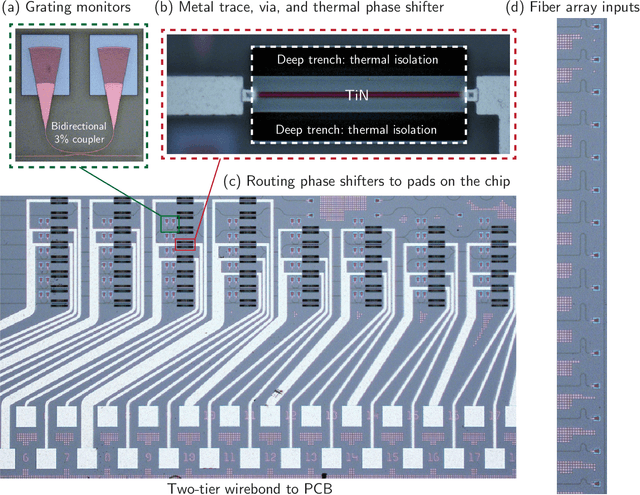
Abstract:Neural networks are widely deployed models across many scientific disciplines and commercial endeavors ranging from edge computing and sensing to large-scale signal processing in data centers. The most efficient and well-entrenched method to train such networks is backpropagation, or reverse-mode automatic differentiation. To counter an exponentially increasing energy budget in the artificial intelligence sector, there has been recent interest in analog implementations of neural networks, specifically nanophotonic neural networks for which no analog backpropagation demonstration exists. We design mass-manufacturable silicon photonic neural networks that alternately cascade our custom designed "photonic mesh" accelerator with digitally implemented nonlinearities. These reconfigurable photonic meshes program computationally intensive arbitrary matrix multiplication by setting physical voltages that tune the interference of optically encoded input data propagating through integrated Mach-Zehnder interferometer networks. Here, using our packaged photonic chip, we demonstrate in situ backpropagation for the first time to solve classification tasks and evaluate a new protocol to keep the entire gradient measurement and update of physical device voltages in the analog domain, improving on past theoretical proposals. Our method is made possible by introducing three changes to typical photonic meshes: (1) measurements at optical "grating tap" monitors, (2) bidirectional optical signal propagation automated by fiber switch, and (3) universal generation and readout of optical amplitude and phase. After training, our classification achieves accuracies similar to digital equivalents even in presence of systematic error. Our findings suggest a new training paradigm for photonics-accelerated artificial intelligence based entirely on a physical analog of the popular backpropagation technique.
Multibeam Free Space Optics Receiver Enabled by a Programmable Photonic Mesh
Dec 16, 2021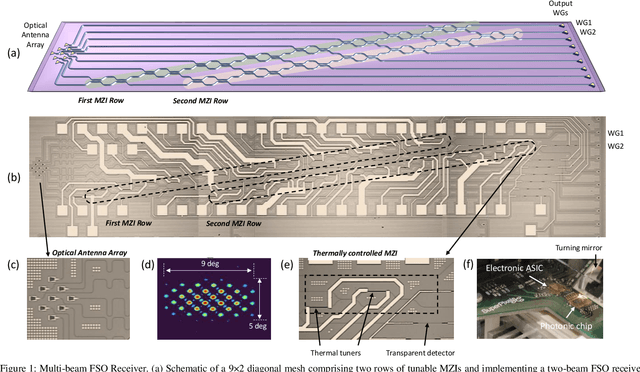
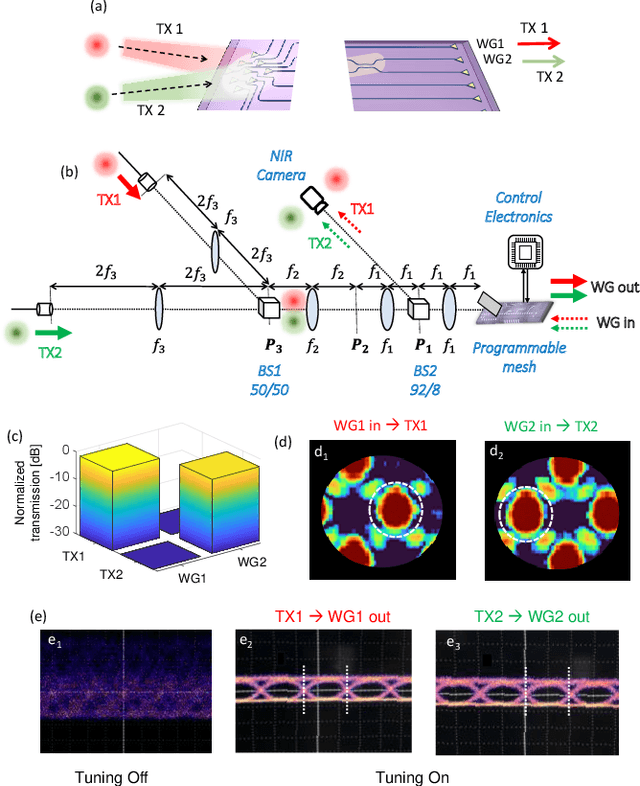
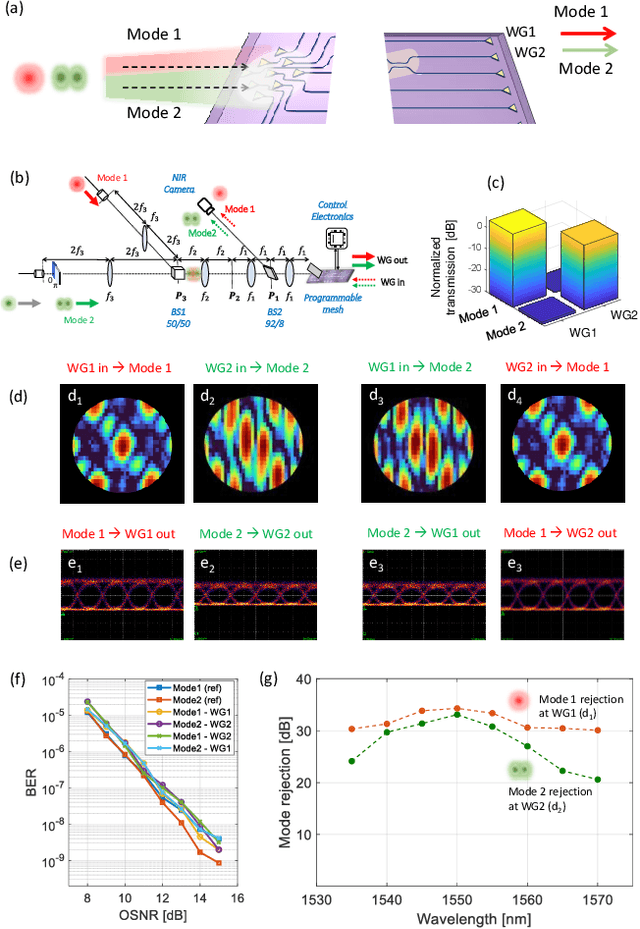
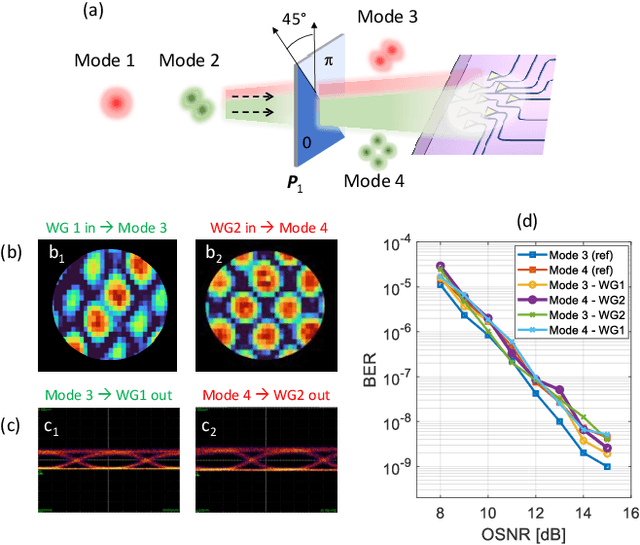
Abstract:Free-space optics (FSO) is an attractive technology to meet the ever-growing demand for wireless bandwidth in next generation networks. To increase the spectral efficiency of FSO links, transmission over spatial division multiplexing (SDM) can be exploited, where orthogonal light beams have to be shaped according to suitable amplitude, phase, and polarization profiles. In this work, we show that a programmable photonic circuits, consisting of a silicon photonic mesh of tunable Mach-Zehnder Interferometers (MZIs) can be used as an adaptive multibeam receiver for a FSO communication link. The circuit can self-configure to simultaneously receive and separate, with negligible mutual crosstalk, signals carried by orthogonal FSO beams sharing the same wavelength and polarization. This feature is demonstrated on signal pairs either arriving at the receiver from orthogonal directions (direction-diversity) or being shaped according to different orthogonal spatial modes (mode-diversity), even in the presence of some mixing during propagation. The performance of programmable mesh as an adaptive multibeam receiver is assessed by means of data channel transmission at 10 Gbit/s a wavelength of 1550 nm, but the optical bandwidth of the receiver (>40 nm) allows its use at much higher data rates as well as in wavelength-division multiplexing SDM communication links.
 Add to Chrome
Add to Chrome Add to Firefox
Add to Firefox Add to Edge
Add to Edge